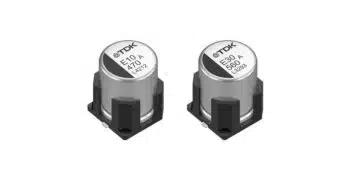Source: University of Manchester news
A team of researchers led by Dr Nazmul Karim and Prof Sir Kostya Novoselov at The University of Manchester have developed a method to produce scalable graphene-based yarn.
Multi-functional wearable e-textiles have been a focus of much attention due to their great potential for healthcare, sportswear, fitness and aerospace applications.
Graphene has been considered a potentially good material for these types of applications due to its high conductivity, and flexibility. Every atom in graphene is exposed to its environment allowing it to sense changes in its surroundings, making it an ideal material for sensors.
Smart wearable textiles have experienced a renaissance in recent years through the innovation and miniaturisation and wireless revolution.
There has been efforts to integrate textile-based sensors into garments, however current manufacturing processes are complex and time consuming, expensive, and the materials used are non-biodegradable and use unstable metallic conductive materials.
As published in ACS Nano, the process developed by the team based at the National Graphene Institute has the potential produce tonnes of conductive graphene-based yarn, using existing textile machineries and without adding to production costs.
In addition to producing the yarn in large quantities, they are washable, flexible, inexpensive and biodegradable.
Such sensors could be integrated to either a self-powered RFID or low-powered Bluetooth to send data wirelessly to mobile device.
“ We believe our ultrafast production process for graphene-based textiles would be an important step towards realizing next generation high performance clothing.
Dr Nazmul Karim„
One hindrance to the advancement of wearable e-textiles has been the bulky components required to power them. Previously it has also been difficult to incorporate these components without compromising the properties or comfort of the material, which has seen the rise of personal smart devices such as fitness watches.
The lead author Dr Shaila Afroj, who carried out the project during her PhD, said “ To introduce a new exciting material such as graphene to a very traditional and well established textile industry, the greatest challenge is the scalability of the manufacturing process. Here we overcome this challenge by producing graphene materials and graphene-based textiles using a rapid and ultrafast production process. Our reported technology to produce thousand kilograms of graphene-based yarn in an hour is a significant breakthrough for the textile industry.”
Dr Nazmul Karim, The other lead author and Knowledge Exchange Fellow (Graphene) from the National Graphene Institute said “High performance clothing is going through a transformation currently, thanks to recent innovations in textiles. There has been growing interests from the textile community into utilizing excellent and multifunctional properties of graphene for smart and functional clothing applications.”
“We believe our ultrafast production process for graphene-based textiles would be an important step towards realizing next generation high performance clothing.”
featured image source: University of Manchester





























